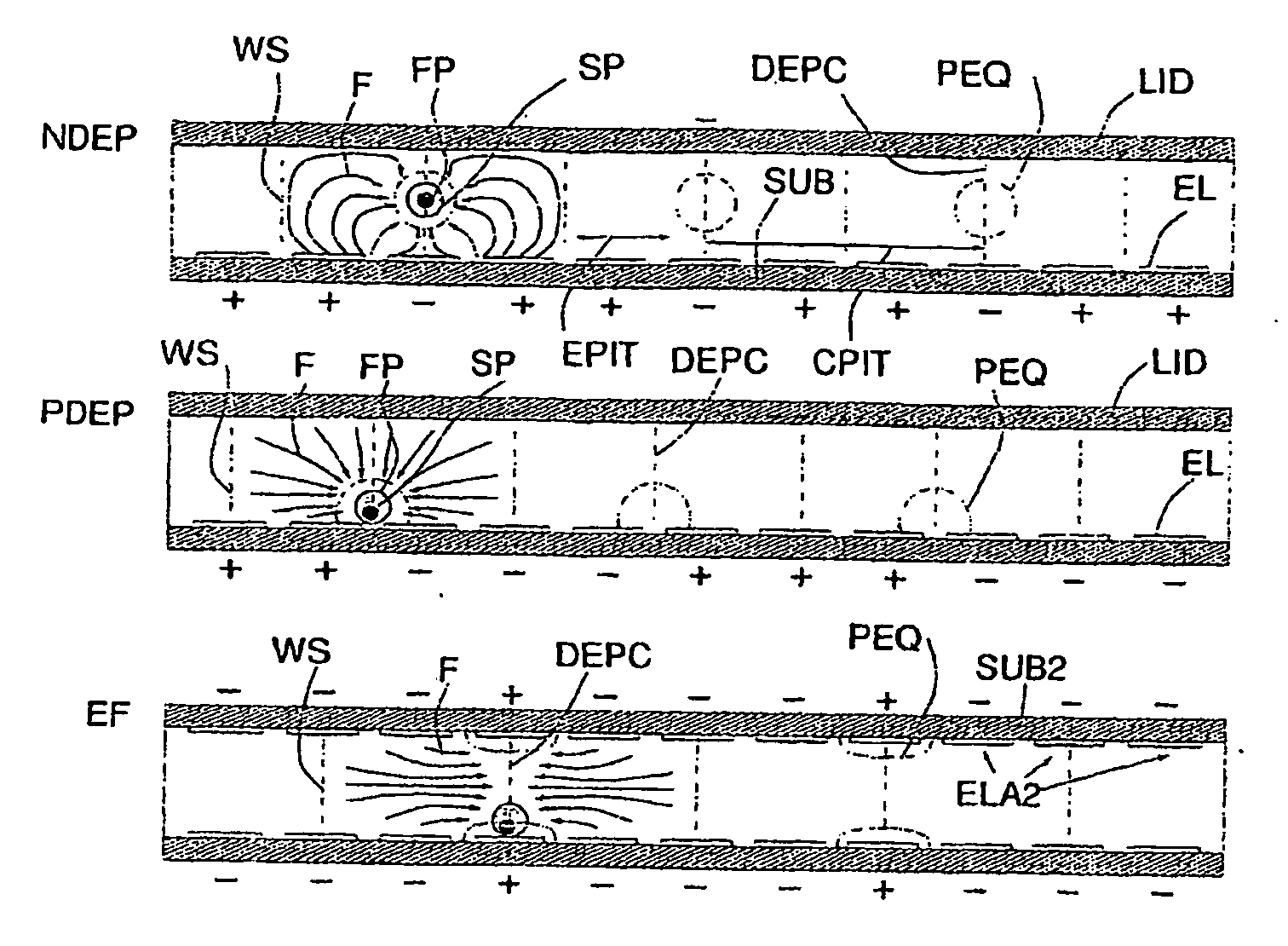Method and apparatus for the separation and quantification of particles
a particle and quantification technology, applied in the field of biological sample analysis and separation, can solve the problems of inability to discriminate particles, inability to implement, and inability to maintain an accurate control,
- Summary
- Abstract
- Description
- Claims
- Application Information
AI Technical Summary
Benefits of technology
Problems solved by technology
Method used
Image
Examples
Embodiment Construction
[0032]The purpose of the invention is to create a method and an apparatus for the separation of particles according to their physical properties or their quantification or the determination of their size. The method is based on using a non-uniform force field (F). This field can for instance be a field of dielectrophoresis (DEP) negative (NDEP) or positive (PDEP), an electrophoretic field (EF) or a field of electrohydrodynamic motion (EHD).
[0033]Generation of the Force Field
[0034]FIG. 1 shows some methods of generating the force field, according to the known art, using an array of electrodes (EL), made on at least one substrate (SUB, SUB2). A cover (LID), that can in its turn be an electrode, bounds a micro-chamber, in use filled with a liquid having a certain viscosity. In the case of DEP, the applied voltages are periodic voltages (preferably sinusoidal) in phase (+) and counter-phase (−). Voltages in counter-phase are understood to be voltages phase-shifted by 180 degrees. The fi...
PUM
| Property | Measurement | Unit |
|---|---|---|
| diameter | aaaaa | aaaaa |
| diameter | aaaaa | aaaaa |
| diameter | aaaaa | aaaaa |
Abstract
Description
Claims
Application Information
 Login to View More
Login to View More - R&D
- Intellectual Property
- Life Sciences
- Materials
- Tech Scout
- Unparalleled Data Quality
- Higher Quality Content
- 60% Fewer Hallucinations
Browse by: Latest US Patents, China's latest patents, Technical Efficacy Thesaurus, Application Domain, Technology Topic, Popular Technical Reports.
© 2025 PatSnap. All rights reserved.Legal|Privacy policy|Modern Slavery Act Transparency Statement|Sitemap|About US| Contact US: help@patsnap.com



